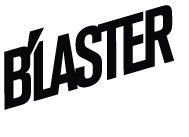HOW TO USE METAL RESCUE BATH
IDEAL FOR ITEMS THAT CAN BE SOAKED
PREP: For best results, remove surface dirt, oil, grease or anything that could be a barrier between Metal Rescue and the surface of the metal. Remember, Metal Rescue BATH is not an acid–it will not eat its way through oil and grease–but that’s okay with us because it also won’t eat its way through other materials such as your favorite jeans or that soft flannel shirt you have had for years.
SOAK: There is a reason we named it Metal Rescue Rust Remover BATH –rusty metal surfaces must be soaked for successful results.
- Place metal part(s) in plastic container (think of it as a bathtub).
- Items to be de-rusted must be immersed/maintain contact with Metal Rescue.
- Temperature of bath should be 68 degrees or warmer.
- As product is working, it will darken in color.
- Continue to reuse Metal Rescue until there is a performance drop off.
NOTE: whether using ready-to-use or concentrate formulation, follow instructions for use closely to prevent diminished performance.
CHECK: Check periodically. Soak time is dependent on level of rust:
- Light rust up to 2 hours
- Moderate rust up to 12 hours
- Heavy rust up to 48 hours
Remove from Metal Rescue once rust has been removed. Over soaking could result in darkening of metal.
DRY: Dry part thoroughly.


Additional Metal Rescue Tips for Success
Metal Rescue works optimally at room temperature (68°F or 20°C) and above, so it may require heating in cold temperatures. Note: If room temperature is 68⁰, the temperature of Metal Rescue bath will likely be a few degrees cooler. Similarly, if the metal part has been stored in an outdoor garage or workshop, it is possible that the metal item will be cold and could cause the temp of the Metal Rescue bath to drop. Nearly all of the photos and testimonials on this website are metal parts that were de-rusted at room temperature.
To accelerate the rust removal process, heat Metal Rescue up to a temperature of 150° F (70°C). Remember, Metal Rescue is a water-based liquid and therefore operates differently than an acid or other traditional rust remover. A useful analogy is of very soiled and dirty dishes. It would be very difficult to remove heavy grease or sticky substances in cold, soapy dish water compared to warm soapy dish water. Because Metal Rescue is water-based it functions in a similar way. This example is offered only as an analogy—Metal Rescue does not require heat to work-but it does require that the temperature of the bath remain at room temperature or above. Operating temperatures for Metal Rescue are 68°F (20⁰C) to 150°F (65⁰C).
Metal Rescue is reusable, simply store product according to storage recommendations. One gallon of Metal Rescue will remove rust from 10 square feet of moderately rusted steel or approximately a ½ pound of dry rust. Metal Rescue will darken as it is working due to the iron oxide particles removed from the iron/steel. It will cease to be effective when the liquid turns completely black. Once opened, Metal Rescue is good for one year.
When the rust removal process is complete, pour used Metal Rescue into plastic storage container (using a filter such as cheese cloth or paint filter to skim any rust flakes/sediment), cap and save for future use. Keep used and fresh Metal Rescue separate. Metal Rescue is water-based, if evaporation occurs during use or storage simply replace with fresh tap water to original level. Note: The addition of water is seldom needed, but typically presents when Metal Rescue is used in hot, humid, outdoor conditions.
No. Metal Rescue will penetrate dirt and oil. However, pre-cleaning metal parts is recommended before soaking in Metal Rescue and detergents are more economical and are designed to remove various contaminants.The removal of anything that could act as a barrier to Metal Rescue making its way to the surface of the metal will speed up the rust removal process and extend the life of the Metal Rescue. Because Metal Rescue is not an acid, items such as cosmoline, heavy greases, and similar materials, should be removed.
Metal Rescue will remove iron oxide (rust) from ferrous-based substrates in 5 minutes up to 48 hours depending on the degree and age of the rust. It will remove zinc phosphate, bluing, browning, and other oxide finishes in about 20–40 minutes immersion time. It also brightens copper and copper-based alloys such as brass and bronze. For metals with questionable finishes, test a small portion of the metal in Metal Rescue prior to full submersion.
Metal Rescue is an excellent rust remover for gas tanks of any type.
One question we commonly receive is what to do once the rust removal process is complete. Many mechanics and hobbyist apply a tank liner or cream coating to seal the gas tank. This coating is often used for two primary reasons: 1) to prevent flash rusting or re-rusting of the gas tank and 2) to fill in any pin holes or holes that were exposed by the removal of rust. We do not recommend the use of tank liners or cream coatings unless it is necessary. If there are pin holes in the gas tank, after removing rust with Metal Rescue, we suggest welding or brazing the tank from the outside as an alternate option.
If you choose to use a tank liner/coating, carefully read the product instructions as some of these coatings actually require rust to be present in order for it to bond properly. This is commonly found with some of the “paint over rust” or rust converter products. From our perspective, we would never want to restore a vehicle and leave rust of any type on the metal. If you do not follow instructions for some of the paint-over-rust products, you may find rust creeping back through the coating.
Our philosophy is to always remove rust in a clean and easy way, then dry the metal thoroughly.


To Use or Not To Use? How to determine best use on painted surfaces
Metal Rescue will not remove or harm the vast majority of paint coatings, with a few exceptions. #1. If there is a layer of rust has formed under the paint some of the paint coating will be lost as Metal Rescue removes the rust and therefore the paint on top of the rust. #2. Some paints and inks (typically red/orange), especially old paints, may use iron oxide pigment. Metal Rescue has been engineered to remove iron oxide in all forms, therefore it may dissolve the pigment in these types of paints. #3. Painted metal items with flaking or cracking surfaces or chipping/deteriorating paint or coatings may not be suited for prolonged soaking–whether it is Metal Rescue or plain water–and may experience unexpected damage.
We strongly advise that “when in doubt, test it out.” Test a small, unseen area on the items before proceeding with your project.
How to dispose:
Metal Rescue is a water-based solution, it is non-corrosive and non-flammable. It contains no VOCs, solvents, or acids. Check local and federal disposal requirements.
How to store:
Metal Rescue has an indefinite shelf life for un-opened product stored in proper conditions (room temperature/indoor/out of direct sunlight). Once opened, the shelf life of the solution will vary dependent on contaminants introduced. While storing, keep Metal Rescue covered to minimize evaporation. Used solution that is poured back into a sealed container will allow anaerobic bacteria to begin the degradation process. Open baths that are covered to prevent too much evaporation will continue to operate effectively for up to 12 months.






